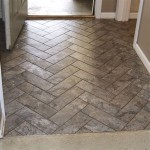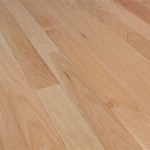Tiles for Wall and Floor: A Comprehensive Guide
Tiles have long been a popular choice for both wall and floor coverings in homes and commercial spaces. They offer a wide range of benefits, including durability, ease of maintenance, and aesthetic versatility. This article aims to provide a comprehensive guide to tiles, covering their types, advantages, disadvantages, and considerations for selecting the right tiles for your needs.
Types of Tiles
Tiles are broadly categorized into several types, each with unique properties and applications:
- Ceramic Tiles: Made from clay and fired at high temperatures, ceramic tiles are durable, affordable, and available in a wide array of colors, patterns, and finishes. They are suitable for both walls and floors in various settings, from kitchens and bathrooms to outdoor areas.
- Porcelain Tiles: These tiles are also made from clay but are denser and more durable than ceramic tiles. They are highly resistant to scratches, stains, and moisture, making them ideal for high-traffic areas, exterior applications, and even commercial settings.
- Stone Tiles: Natural stone tiles, such as marble, granite, slate, and limestone, offer unique beauty and timeless elegance. They are durable, eco-friendly, and add value to any space. However, they can be more expensive and require specialized care.
- Glass Tiles: Glass tiles come in various colors, textures, and sizes. They are known for their reflective properties, adding light and a touch of elegance to any space. However, glass tiles can be more fragile than other types.
- Metal Tiles: Metal tiles, primarily made from stainless steel or aluminum, are durable, water-resistant, and provide a modern aesthetic. They are often used in kitchens, bathrooms, and backsplashes.
- Mosaic Tiles: These small tiles are available in various materials, including ceramic, glass, and natural stone. They offer a versatile design element, allowing for intricate patterns and creative layouts.
Advantages of Tiles
Tiles offer several advantages that make them a desirable choice for various applications:
- Durability: Tiles are highly resistant to wear and tear, scratches, and impact. This durability makes them suitable for high-traffic areas and heavy use.
- Easy Maintenance: Tiles are non-porous and require minimal cleaning. They can be easily wiped clean with a damp cloth, making them ideal for spaces that require frequent cleaning, such as kitchens and bathrooms.
- Water Resistance: Most tiles are highly water-resistant, making them suitable for wet areas like bathrooms, showers, and kitchens. They prevent water damage and mold growth.
- Fire Resistance: Tiles are inherently fire-resistant, making them a safe choice for all areas of a house. They also prevent the spread of flames in case of a fire.
- Aesthetic Versatility: Tiles come in a vast range of colors, patterns, textures, and sizes, allowing for endless design possibilities to match any style and décor.
- Hypoallergenic: Tiles are non-allergenic and do not trap dust mites or allergens. This makes them a good choice for people with allergies or sensitivities.
- Cost-Effective: While some types of tiles, like natural stone, can be expensive, many other types, especially ceramic and porcelain, offer a cost-effective solution for flooring and wall covering.
Disadvantages of Tiles
While tiles offer numerous advantages, they also have some potential drawbacks:
- Coldness: Tiles can feel cold underfoot, especially in colder climates. It is advisable to consider underfloor heating or rugs to mitigate this issue.
- Slippery Surfaces: Some types of tiles, especially polished versions, can be slippery when wet. It is essential to choose tiles with appropriate slip resistance, especially in areas like bathrooms and showers.
- Installation Complexity: Installing tiles can be a complex process that requires specialized tools and skills. It is often recommended to hire a professional for tile installation to ensure proper adherence and prevent future issues.
- Grout Maintenance: Grout lines between tiles can accumulate dirt and grime over time. Regular cleaning and sealing are necessary to maintain the appearance and hygiene of the tile surface.
- Limited Flexibility: Once installed, tiles are difficult to modify or remove. This lack of flexibility can be a drawback if you plan to make future changes to your space.
Factors to Consider when Choosing Tiles
Selecting the right tiles for your needs involves careful consideration of several factors:
- Application: Determine where the tiles will be installed, whether it's a wall or floor, and the specific area, such as bathroom, kitchen, or outdoor space. This will help narrow down the tile choices and ensure suitability for the application.
- Traffic: Consider the expected traffic levels in the area. For high-traffic areas, choose durable tiles like porcelain or natural stone. For low-traffic areas, less durable options like ceramic tiles may suffice.
- Budget: Tiles come in a wide price range, from affordable ceramic tiles to high-end natural stone. Establish a budget upfront to guide your selection process.
- Style and Aesthetics: Choose tiles that complement your interior design style and existing décor. Consider color, pattern, texture, and size to create the desired aesthetic.
- Slip Resistance: For wet areas, select tiles with a high coefficient of friction (COF) to prevent slipping. Check tile specifications for slip resistance ratings.
- Moisture Resistance: For bathrooms, showers, and outdoor applications, choose tiles with high moisture resistance to prevent water damage and mold growth.
- Durability and Abrasion Resistance: For high-traffic areas, choose tiles with high abrasion resistance to withstand wear and tear.
- Maintenance Requirements: Consider the ongoing maintenance required for different tile types. Some tiles, like natural stone, require specialized care while others, like ceramic tiles, are easy to maintain.
By carefully considering these factors and consulting with a tile specialist, you can choose the best tiles for your specific needs and create a beautiful and functional space.

Understanding The Difference Floor Tiles Vs Wall Chandan Marbles

Trafficmaster Vigo White 12 In X 24 Matte Ceramic Stone Look Floor And Wall Tile 16 Sq Ft Case Nhdvigwhi1224c The Home

12 6 X 24 Tribeca Mixed Plank Wall Tile Club Box

Florida Tile Home Collection Oasis Beige Matte 12 In X 24 Porcelain Floor And Wall Sample 1 9 Sq Ft Piece

Stainmaster Somerset Beige Floor And Wall Tile Collection

6 Tips For Matching Your Walls And Floors Tiles Direct

Kansas City Gray Ceramic Wall And Floor Tile 21 X In The Shop

38 Pack Antiek 2 58 In X 7 9 Glossy Green Ceramic Subway Wall And Floor Tile 5 Sq Ft Case

Designer Wall Tiles Vitrified Trends And Designs H R Johnson

What Are The Most Popular Bathroom Tile Colors








